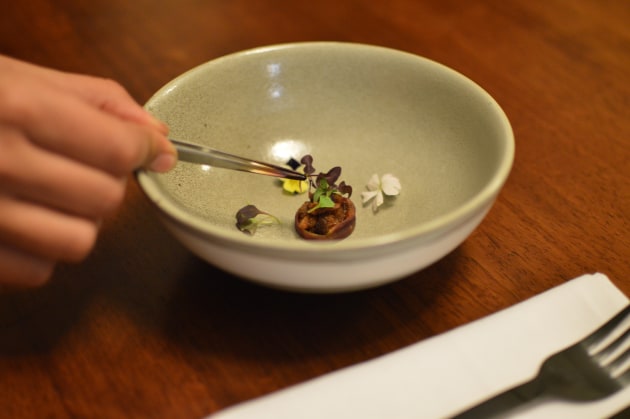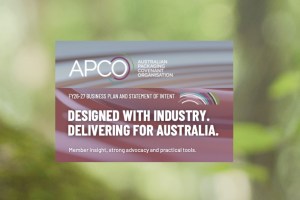There is more to the alternative protein category than the plant-based patties taking over burger joint menus and supermarket aisles. Doris Prodanovic speaks to the founders of Vow Food, George Peppou and Tim Noakesmith, about making meat from cells. This article was first published in Food & Drink Business July/August 2020.
Alternative protein think tank Food Frontier expects plant-based protein to generate $3 billion in domestic sales by 2030. At the same time cell-based, or cultivated, meat alternatives are being developed to grow animal cells rather than entire animals for the future of food.
Sydney-based start-up Vow Food, founded by George Peppou and Tim Noakesmith, is leading the Australian contingent, already developing cultivated kangaroo and pork as part of their growing cell library.
“Our ancestors, around 10,000 years ago, selected some animals they could domesticate, and we’ve held on to that tradition for a bunch of really sensible reasons,” Peppou told Food & Drink Business.
“Now we’re looking at this new paradigm of food where we can produce meat from animal cells. We don’t just have to think about the animals that we can domesticate, but we can start to think about any animal which has cells, which is literally all of them. Our cell library gives us a chance to start to explore all those other culinary secrets that are kept in nature.”
Building a library
There are seven species in Vow’s cell library so far. Noakesmith says that even if certain animals were able to be domesticated, the means to produce it on a mass scale without decimating the population, hasn’t been possible.
Vow uses the original animal cells to produce and store a “large biobank library”, after which the animal is not involved in the process whatsoever.
“The actual ethics around working with animals is abstracted from the process once it’s in our library,”says Noakesmith.
“We’re looking at ways we can further remove the animals from the process, by using a certain type of stem cell, taking a harmless part of an animal, say a feather, or a part seen as a waste product like a discarded umbilical cord, and reprogramming that to express the cells available in meat, such as muscle, fat, or connective tissue.”
Creating meat with science
In the pursuit of new culinary products, Vow combines its science with a variety of custom-built technology. The team has its own software, hardware and robotics to enhance work efficiency of both the stem-cells and the food scientists.
“In one process, we have one scientist performing work eighty times more efficiently than just months earlier,” Noakesmith says.
“From the beginning, we’ve been deeply focused on how we can bring the best of technology and apply it to the biological sciences to accelerate our R&D.”
Peppou adds: “We have incredible software engineers working tightly with scientists to completely reinvent how we approach producing these new types of food.”
A question of sustainable scale
Sustainability is one of the key focuses for Vow. For Noakesmith, he began exploring his own decisions around purchasing and consuming food, and came to the realisation that one of the “greatest problems facing humanity” centres around the way food is produced.

“The current global food system we have is not scalable for a future of ten billion people, or at least, not scalable in the sense where we end up with an earth that survives and flourishes while we continue to grow as a population,” he says.
“I’d been following much of the alternative protein journey, but it was when I realised what was possible with cell-based meat that my perspective completely changed.
“I was immediately obsessed and started getting in contact with people all over the world to learn about the current state of the industry, the technology and how Australia could play a part.”
Meanwhile, the question of how to achieve an all-win scenario, that is, developing a product that is ethical, sustainable, and “still has all the things we love about meat”, was an exciting prospect for Peppou.
“It’s not a compromise or sacrifice, but it’s a chance to get everything that we want, without really having to change our behaviour as people,” he says.
“There’s a step beyond that as well, we have an unlimited breadth of new options now, so how can we think about redesigning what meat can be? The culinary opportunity is the thing that really excites and drives me.”
Premium alternative
Cultivated meat does not aim to compete with the traditional agriculture sector, instead adding to the range of choice that will be available for consumers, alongside plant-based options.
The goal is to start out as a premium alternative to meat, Peppou says, with Vow in constant communication with “kindred pioneers”, including chefs and cuisine specialists, to experience, taste and create meals from the meat.
Among the challenges Vow faces is fostering bio-tech innovation here in Australia.
Noakesmith says, “Life science companies are generally created and positioned to partner with very big and incumbent companies, as well as the large research and education institutes, but Vow needs to move extremely fast.
“Seeing the industry evolve to support more rapid entrepreneurial endeavours will ultimately contribute to the success of biotech and advanced manufacturing industries here in Australia.”
The next 12 months for Peppou and Noakesmith will see them focus on expanding the Vow team, as well as growing more food – “which we can safely say, is likely to have never been seen in a mainstream supermarket,” Noakesmith adds – and demonstrating their technology.
Vow has produced food prototypes from three different species, with this number set to increase to five species by August.
“In the last few months, we’ve really switched gears, adding food production and the iteration of food products to our existing stack of R&D exploration.
“We’re understanding more about what impacts flavour, texture and everything from the colour to the nutrition,” says Peppou.
“This is really our life’s work now – how to link the biology of animal cells to the quality of food and the finished product, so we become the artists of the meat of the future.”






